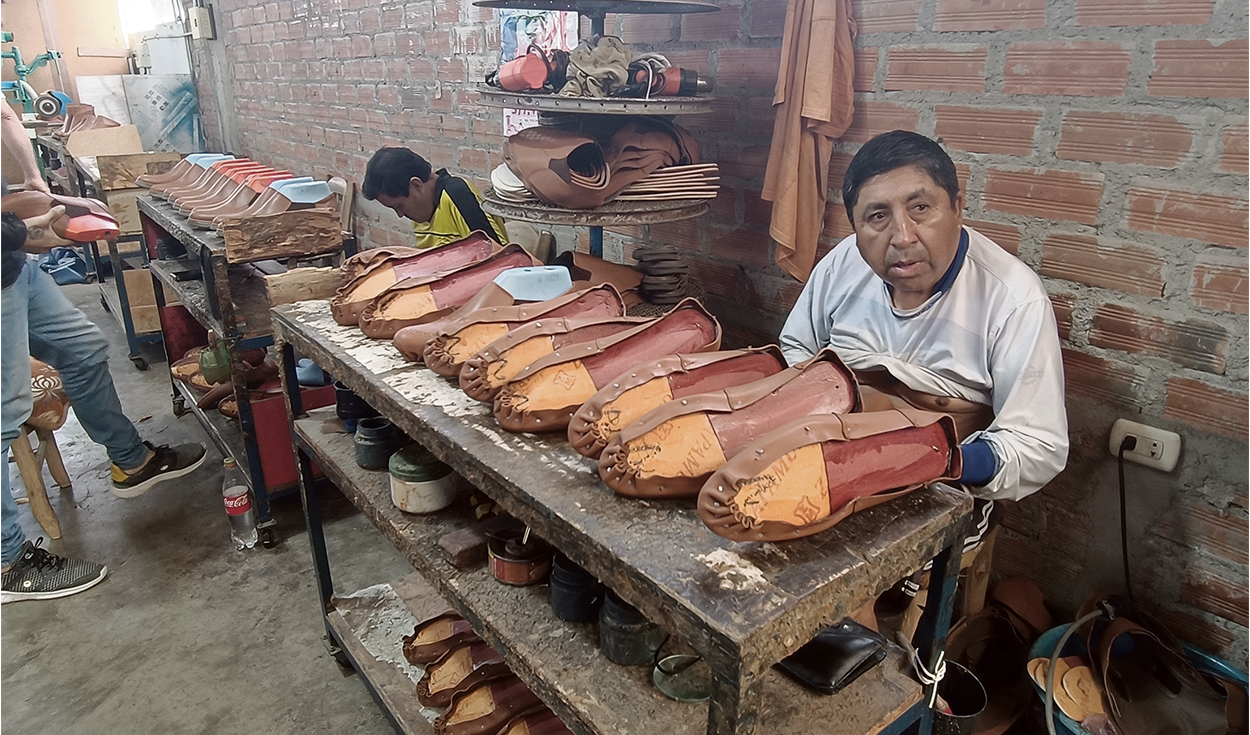
One of the most lagging sectors after the pandemic and the onslaught of Cyclone Yaku is the footwear and leather industry, which has only been reactivated by less than 50%. At the national level, companies are working at 20% or 30% of their productive capacity, warned Vladimir de la Roca, president of the Chamber of Leather and Footwear of La Libertad in dialogue with La República.
The situation is worsening due to the threat of the El Niño phenomenon and the weakening of GDP, taking into account that the Ministry of Economy and Finance (MEF) reduced growth expectations to 1.1% for this year.
In addition, of the four sectors that will end in negative, one of them is manufacturing, which will experience a drop of 2.3%. Specifically, the non-primary sector, which covers footwear and leather, will decrease by 1.8%, according to the Multiannual Macroeconomic Framework (MMM) 2024-2027.
The workforce migrated to another sector
El Porvenir, the footwear commercial emporium that has set the tone for the market for decades, is no stranger to the inauspicious outlook. Entrepreneurs tell this newspaper that, due to the deterioration of their income and the lack of employment, about 50% of workers left the sector to seek employment in agriculture.
“My company suffered a 70% drop due to the pandemic. In 2021, we had a growth of 40%, in 2022 we reached 70%, and the situation for 2023 is complicated,” said Marleny Carranza Lizárraga, merchant and councilor of El Porvenir.
The increase in the cost of inputs also weighs down the sector. Carranza indicates that Tekno brand glue—a key product for clothing—tripled its price: from S/180 to S/400.
Added to this is job insecurity, since, of the 2,000 companies in Trujillo, only between 400 and 500 are formalized. “30% had to declare bankruptcy,” added Daleska Rengifo, another merchant from El Porvenir.
Export eagerness
Exports of leather footwear reached US$11.2 million in 2022, representing a growth of 38% compared to 2021, according to Idexcam.
The destination with the highest demand was the United States, which concentrated 47% with an exported volume of 168,994 pairs of shoes worth US$5.3 million. Other countries that stand out are Singapore, Panama, Bolivia and Canada.
“We have held meetings with potential international buyers. The foreign merchant pays more than the national one,” said Diego Vega Lizárraga, representative of the sector, after leading a delegation of 2,500 businessmen from La Libertad who traveled to the Magic International fair to expand our production in the North American giant.
On the other hand, De la Roca warns that 70% of the Peruvian market is occupied by Chinese and Brazilian imports, whose low prices make it difficult to position national footwear.
Expectations with the new management of Produce
By the end of the year, businesses project that the Christmas campaign will help mitigate poor performance and achieve a recovery close to 100%.
Likewise, with the recent entry of Ana María Choquehuanca to the Ministry of Production, De la Roca highlights that an increase in support for micro and small businesses in the sector is expected, such as the implementation of purchase programs for one million pairs of school footwear to national stores, as well as footwear for the police and armed forces.
The key
Summit. In November there will be the V National Leather and Footwear Congress, where they will address problems in the sector and implement improvements in the export route.
Ratio. For August, consumption of clothing and footwear rose by 0.14%, and in 12 months it registered an increase of 3.57%, according to INEI.
Reactions
Marleny Carranza, merchant and councilor of El Porvenir
“We have been the last sector to reactivate. In Trujillo, 50% of the workers looked for employment in the agricultural sector. We have not yet reactivated ourselves 100%.”
Vladimir de la Roca, president of the Chamber of Leather and Footwear of La Libertad
“By the end of the year, as we are, if the issue of the El Niño phenomenon worsens and with the low effective economic reactivation, the sector could reach half of the 20% or 30% of current activity.”
Source: Larepublica
Alia is a professional author and journalist, working at 247 news agency. She writes on various topics from economy news to general interest pieces, providing readers with relevant and informative content. With years of experience, she brings a unique perspective and in-depth analysis to her work.












